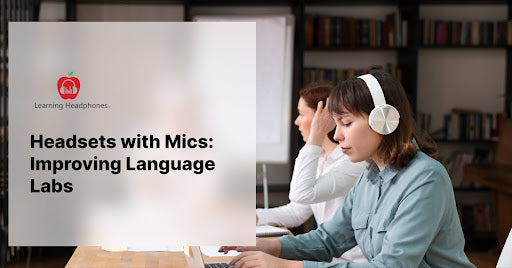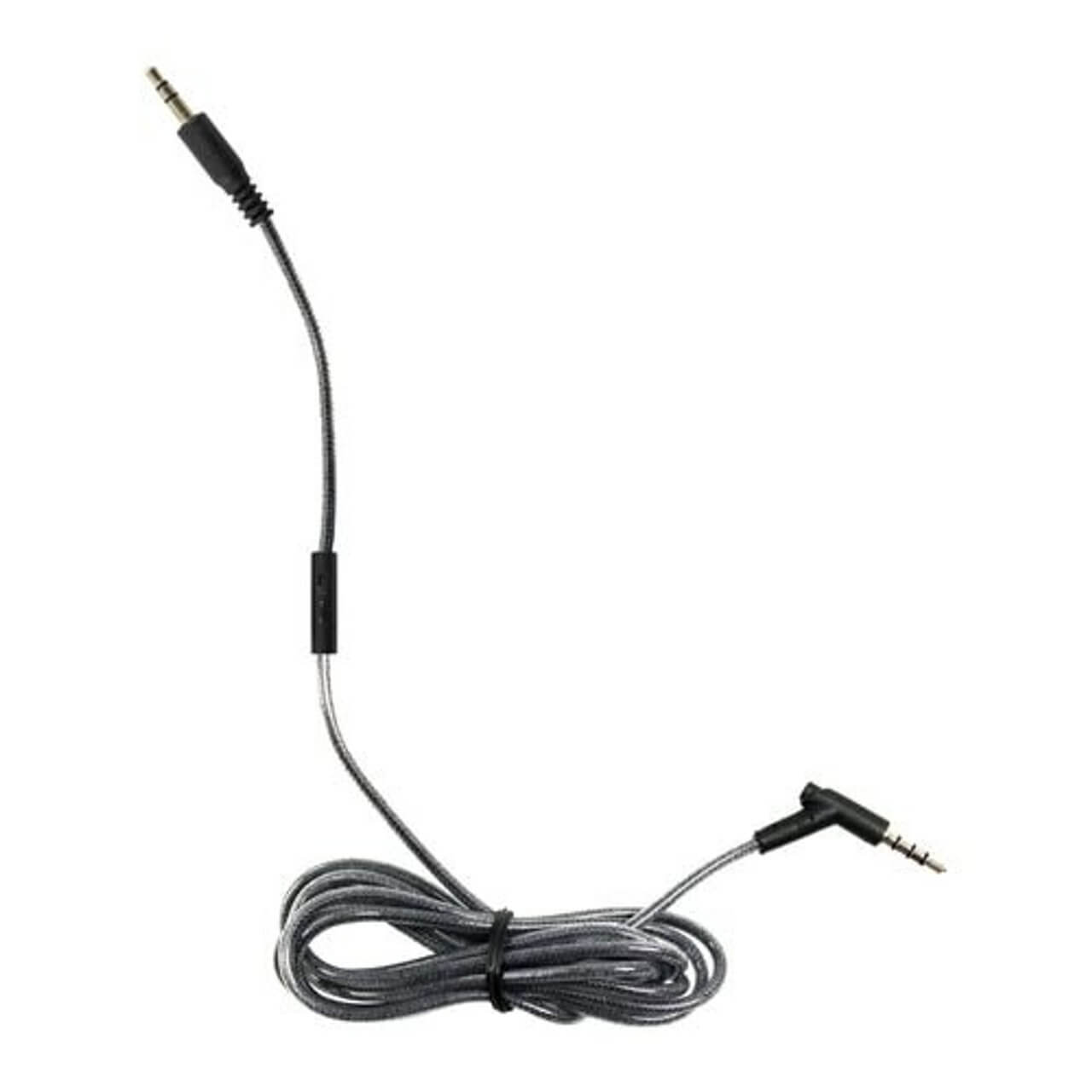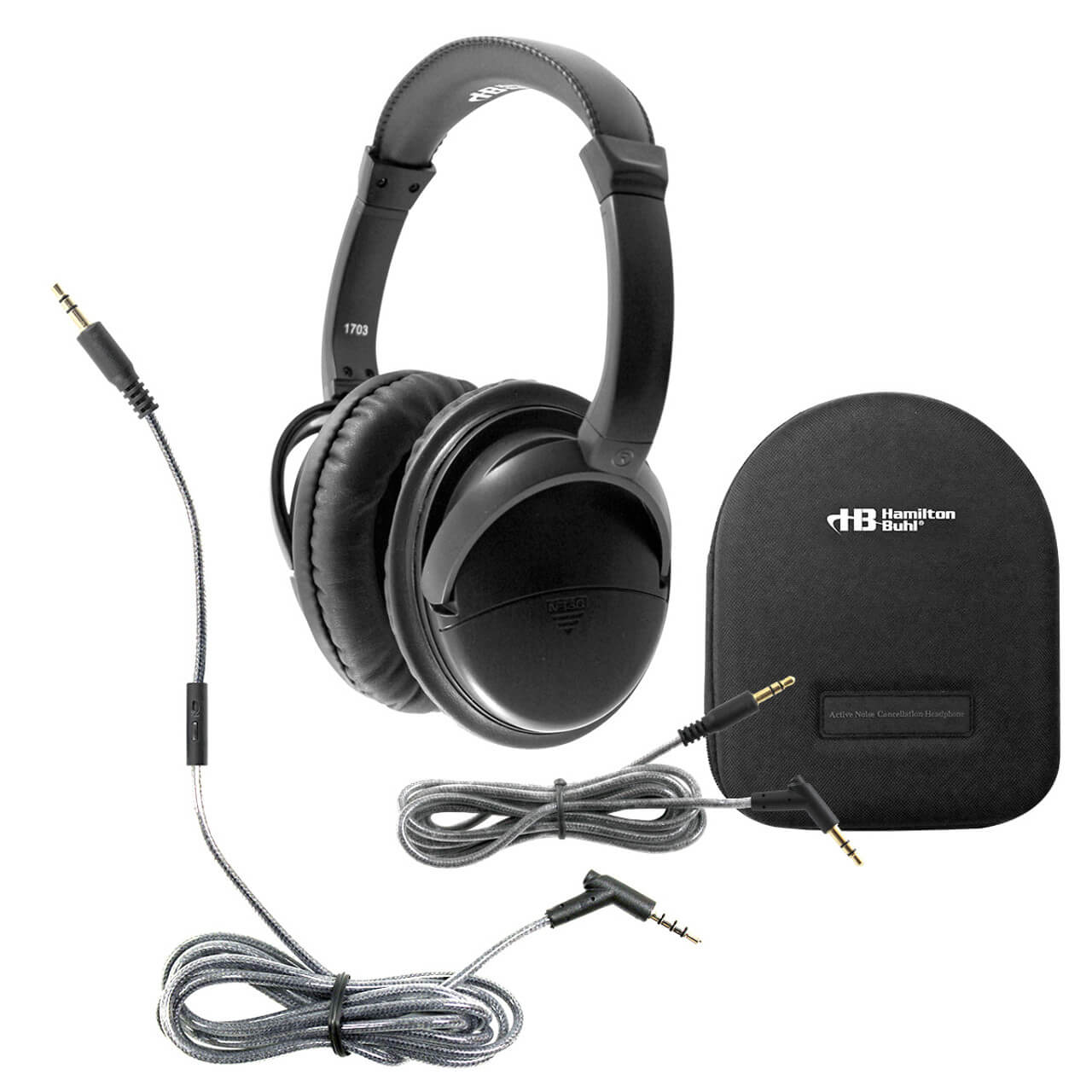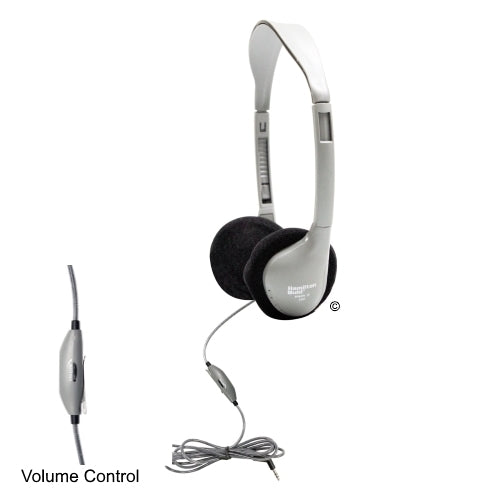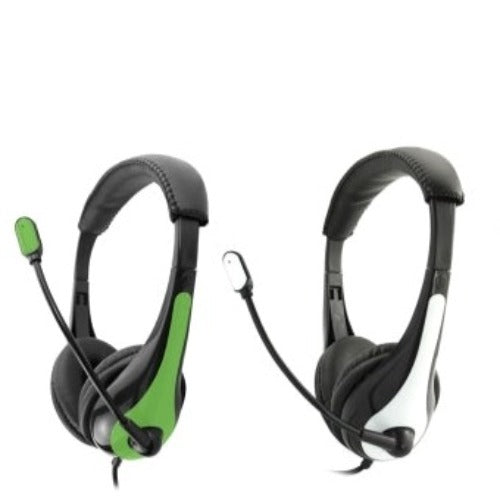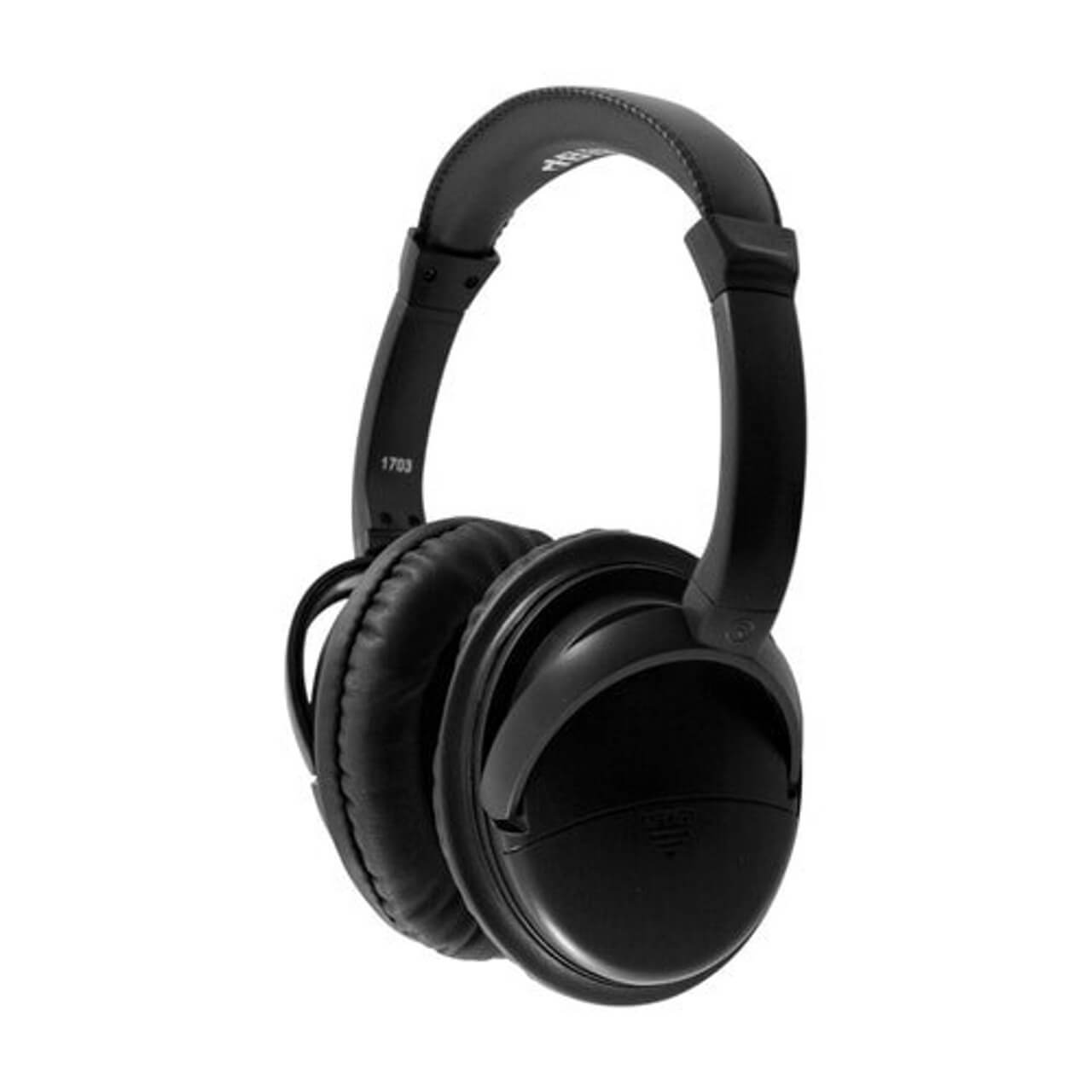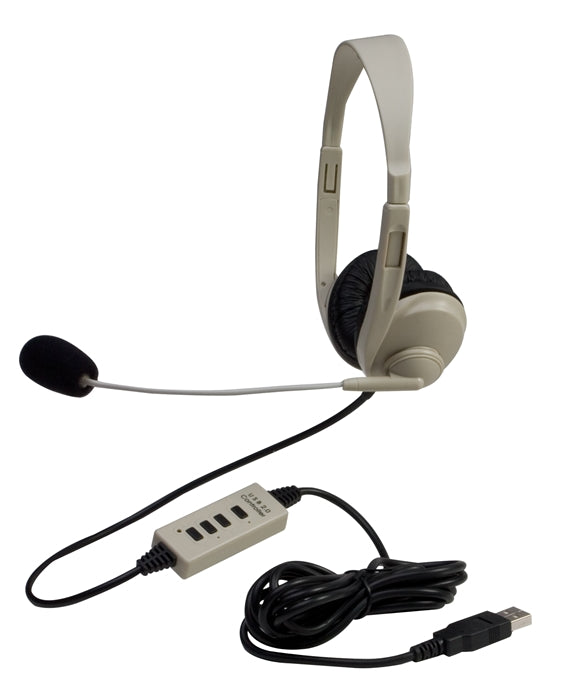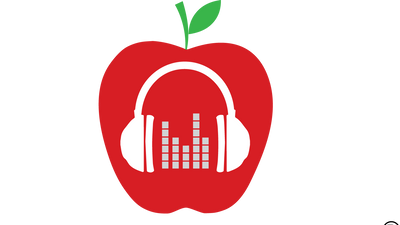Key Takeaways Language Lab Headsets with Mics | K–12 Guide
- Quality headsets with microphones are essential tools for modern language labs, providing clear audio input and output
- Noise-canceling technology significantly improves the language learning experience by reducing distractions
- USB headsets offer plug-and-play convenience across multiple devices used in educational settings
- Durable, classroom-ready headsets are designed to withstand daily use by multiple students
- Proper microphone positioning and compatibility are crucial for accurate language assessment
- Headsets with built-in volume controls provide students with autonomy over their learning experience
Introduction: The Critical Role of Headsets in Modern Language Labs
Language labs have evolved dramatically from the analog cassette-based systems of the past to today's digital multimedia environments. At the heart of this evolution are quality headsets with integrated microphones – tools that have transformed from mere accessories to essential components of effective language instruction. These specializedaudio devices create the foundation for immersive language learning experiences, enabling students to clearly hear native pronunciations while practicing their own speaking skills with confidence. Educational headsets are now considered fundamental equipment in any modern language learning environment.
In today's educational landscape, where both in-person and remote learning environments coexist, the importance of quality audio equipment cannot be overstated. Language acquisition relies heavily on the ability to hear subtle phonetic differences and receive immediate feedback on pronunciation attempts. Educational headsets with microphones create the ideal acoustic environment for these critical learning processes.
Modern language labs utilize a variety of digital tools and platforms that all share one common requirement: clear audio input and output. Whether students are engaging with interactive software, participating in virtual conversation exchanges, or completing standardized assessments, the quality of their headset directly impacts their performance and learning outcomes. Studies show that quality headsets in language labs can contribute to a 25-30% increase in performance for English language learners, making them one of the most important investments for educational institutions.
Why Specialized Headsets Matter for Language Learning
Not all headsets are created equal, especially when it comes to the specific needs of language instruction. Language learning presents unique audio challenges that require specialized equipment designed with educational environments in mind. Consumer-grade headphones might work for casual listening, but they often lack the specific features that make language learning efficient and effective. The right headset can make the difference between a student who struggles with pronunciation and one who confidently masters new sounds.
Enhanced Audio Clarity for Pronunciation Development
Accurate pronunciation is fundamental to language acquisition. Quality headsets deliver clear audio reproduction that allows students to distinguish between subtle phonetic differences – like the distinction between "ship" and "sheep" in English or tonal variations in Mandarin Chinese. This clarity is essential for developing proper pronunciation habits from the beginning, preventing the reinforcement of errors that become difficult to correct later. When students can clearly hear the correct sounds, they're much more likely to reproduce them accurately in their own speech.
The HamiltonBuhl Deluxe Active Noise-Cancelling Cord ($49.99) transforms standard headphones into functional headsets with active noise-canceling technology. This affordable solution is compatible with devices featuring a 3.5mm jack and includes a 5' removable Dura-Cord, making it an excellent entry point for schools looking to upgrade existing headphone inventory without replacing everything.
Noise Isolation for Focused Learning
Language labs often host multiple students simultaneously, creating potential for audio interference and distraction. Headsets with noise-canceling or noise-isolating features create individual acoustic environments where students can focus exclusively on their language materials without ambient classroom noise. This isolation is particularly important in busy schools where multiple classes may be happening simultaneously, or in open-plan learning spaces where sound travels easily. By creating a personal acoustic space, headsets help students maintain concentration even in less-than-ideal environments.
The HamiltonBuhl Deluxe-Size Active Noise-Cancelling Headset ($59.99) represents a premium solution for language labs seeking maximum focus for students. With deluxe over-ear cushions and active noise-canceling technology, this headset creates an optimal environment for language acquisition while the in-line microphone ensures clear voice recording for pronunciation practice and assessment. The comfortable design makes it suitable for extended learning sessions without causing ear fatigue.
Microphone Quality for Speech Assessment
The microphone component of language lab headsets is equally important as the audio output. High-quality microphones capture the nuances of student speech, allowing for accurate assessment of pronunciation and fluency. This is particularly crucial for:
- Automated speech recognition exercises
- Recorded speaking assessments
- Real-time feedback from instructors
- Peer-to-peer communication activities
The USB School Testing Headset ($29.99) features a noise-reducing design and rotating, noise-canceling microphone that creates the ideal setup for language testing and practice. The ambidextrous fit ensures comfort for all students, making these headsets perfect for extended language lab sessions. With USB connectivity, these headsets provide plug-and-play functionality with most computers and learning platforms.
Essential Features to Look for in Language Lab Headsets
When equipping a language lab, selecting the right headsets is a critical decision that impacts both learning outcomes and budget allocation. The features you prioritize should align with your specific educational needs, technical infrastructure, and student population. Understanding the key components of quality language lab headsets helps administrators make informed purchasing decisions that provide long-term value.
Microphone Design and Positioning
The microphone component of a language lab headset requires specific attention, as it directly impacts the clarity of student speech recordings and communication. Different microphone designs offer various advantages depending on the age of students and the specific language learning activities being conducted. The ability to position the microphone correctly is particularly important for accurate speech capture.
Microphone Types for Language Labs
- Boom Microphones: Adjustable arm positions the microphone close to the mouth for optimal voice capture
- In-Line Microphones: Integrated into the headset cable for a more streamlined design
- Noise-Canceling Microphones: Filter out background noise for clearer speech recording
- Omnidirectional vs. Unidirectional: Different pickup patterns suited to various classroom environments
The HamiltonBuhl® Flex-Phones™ Headsets ($29.99) feature a steel-reinforced gooseneck microphone that can be precisely positioned for optimal voice capture. Designed specifically for Pre K-5 students, these headsets deliver crystal-clear stereo sound in a durable package that's ideal for younger language learners. The flexible design allows the microphone to be positioned at the perfect distance from the mouth, ensuring clear voice recording without distortion.
Connectivity Options for Versatile Deployment
Modern language labs often utilize a variety of devices – from dedicated language lab computers to tablets and Chromebooks. The right connectivity ensures seamless integration across all platforms. Choosing headsets with appropriate connection types for your specific technology ecosystem prevents compatibility issues and ensures a smooth implementation process. Some schools may need multiple headset types to accommodate different devices and learning scenarios.
Common Connectivity Options
- USB Connectivity: Plug-and-play functionality with digital audio processing
- 3.5mm TRRS: Single connector for both audio and microphone (standard for mobile devices)
- Dual 3.5mm TRS: Separate connectors for headphones and microphone
- USB-C: Modern connection standard with growing adoption in educational technology
The Smart Trek Deluxe Stereo Headset with Volume Control and USB Plug ($49.00) offers universal USB compatibility with convenient in-line volume control, making it an excellent choice for computer-based language labs. For schools using mobile devices, the School Testing Headset with 3.5mm Plug ($24.99) with their standard 3.5mm TRRS plug provide a cost-effective solution that works with tablets, smartphones, and computers with combined audio jacks.
Durability for Educational Environments
Language lab headsets must withstand daily use by multiple students, making durability a primary consideration. School environments can be particularly challenging for electronic equipment, with younger students sometimes handling devices roughly. Investing in durable headsets may cost more initially but typically results in lower total ownership costs due to fewer replacements. Key durability features include:
- Reinforced cables with strain relief
- Robust headbands that resist bending and breaking
- Replaceable ear cushions for hygiene and longevity
- Chew-resistant cords (especially important for younger students)
The Advanced School Headset ($99.99) is designed specifically for educational environments with a durable construction that withstands the rigors of daily classroom use. These headsets feature a comfortable fit with a soft padded, adjustable headband that accommodates students of various ages. The rugged design makes them an excellent choice for high school language labs where equipment needs to last for multiple years.
Implementing Headsets in Modern Language Labs
Successfully integrating headsets into language labs requires thoughtful planning and setup. The physical arrangement of the lab, the software being used, and the instructional approach all influence how headsets should be implemented. Taking time to plan the implementation carefully can prevent technical issues and ensure that the equipment enhances rather than hinders the learning experience.
Compatibility with Language Learning Software
Modern language labs utilize specialized software for activities ranging from listening comprehension to speech recognition. Ensuring headset compatibility with these applications is essential for seamless operation. Some language learning platforms have specific audio requirements or work better with certain headset configurations. Testing compatibility before making a large purchase can prevent costly mistakes.
Most language learning platforms require specific audio input/output configurations. USB headsets often simplify this process with plug-and-play functionality, while analog headsets may require additional configuration steps. Testing headsets with your specific language learning software before full deployment is highly recommended. Some schools find it helpful to purchase a small sample of different headset models to evaluate before committing to a full-scale implementation.
Storage and Management Solutions
Proper storage extends the lifespan of headsets and streamlines classroom management. Without organized storage, headsets can become tangled, damaged, or misplaced, creating frustration for both students and teachers. Implementing a systematic approach to headset storage and management helps maintain the equipment and makes transitions between classes more efficient.
Charging and storage solutions range from simple wall-mounted hooks to sophisticated cabinets with integrated charging capabilities. For language labs serving multiple classes, numbered headsets paired with corresponding storage slots facilitate quick distribution and inventory management. Some schools implement check-out systems where students are responsible for the same headset throughout the term, reducing wear and tear from multiple users.
Hygiene Considerations
In shared environments like language labs, headset hygiene is an important consideration. Headsets come into direct contact with students' faces and hair, creating potential for the spread of lice, skin conditions, or illness if proper hygiene practices aren't followed. Implementing consistent cleaning protocols helps maintain a healthy learning environment and can extend the life of the equipment.
- Disposable ear pad covers provide a hygienic barrier between users
- Wipeable ear cushions facilitate quick cleaning between classes
- UV sanitizing cabinets offer advanced disinfection for shared equipment
- Individual student assignment of headsets reduces cross-contamination risks
Pro Tip: Headset Cleaning Protocol
Establish a regular cleaning schedule for shared headsets using alcohol-free disinfectant wipes that won't damage headset materials. Train students on proper handling and storage procedures to maintain both hygiene and equipment longevity. For elementary classrooms, consider assigning each student their own set of ear cushions that can be swapped onto shared headsets.
Top Recommended Headsets for Language Labs
Based on our extensive experience with educational audio solutions, here are our top recommendations for language lab headsets across different budget ranges. These selections balance quality, durability, and value to meet the needs of various educational settings. The right choice depends on your specific requirements, budget constraints, and the age of your students.
Entry-Level Options for Budget-Conscious Schools
The Stereo Headset with Microphone ($19.99) offers exceptional value for schools with limited budgets. Featuring a single 3.5mm TRRS plug for universal compatibility and a flexible microphone for clear communication, these headsets provide the essential functionality needed for basic language lab activities. Despite their affordable price point, they deliver surprisingly good audio quality and comfort for short to medium-length learning sessions.
Pros & Cons: School Headset with Microphone
Pros:
- Extremely budget-friendly at $19.99
- Universal compatibility with 3.5mm TRRS connector
- Adjustable headband fits various student sizes
- Flexible microphone for proper positioning
Cons:
- Less durable than premium options
- Limited noise isolation capabilities
- Basic audio quality suitable for fundamental exercises only
- No additional features like volume control
Mid-Range Options with Enhanced Features
The USB School Testing Headset ($29.99) and the Califone KH-08 On-Ear Headset with In-Line Microphone represent excellent mid-range options with enhanced features for more demanding language lab applications. Both feature USB connectivity for digital audio processing and improved sound quality over entry-level models. These headsets strike a good balance between affordability and performance, making them suitable for regular use in middle and high school language labs.
Pros & Cons: Mid-Range USB Headsets
Pros:
- USB connectivity for improved audio processing
- Enhanced noise reduction capabilities
- More durable construction for longer service life
- Better microphone quality for accurate speech capture
- Compatible with most language learning software
Cons:
- Higher investment than entry-level options
- Limited compatibility with mobile devices without adapters
- May require driver installation on older systems
Premium Options for Advanced Language Labs
For advanced language labs where audio quality directly impacts learning outcomes, the HamiltonBuhl Deluxe-Size Active Noise-Cancelling Headset ($59.99) delivers premium performance. With active noise-canceling technology and deluxe over-ear cushions, this headset creates an immersive audio environment ideal for nuanced language acquisition. The superior sound quality and noise isolation make these headsets particularly valuable for advanced language courses and AP-level classes where subtle phonetic distinctions are crucial.
Pros & Cons: Premium Active Noise-Cancelling Headsets
Pros:
- Active noise-cancellation for maximum focus
- Superior audio fidelity for detecting subtle phonetic differences
- Premium comfort for extended learning sessions
- High-quality microphone for precise speech capture
- Durable construction for long-term institutional use
Cons:
- Significant investment per unit
- May require battery replacement/charging for noise-cancellation features
- Potentially more complex setup and maintenance
Microphone Compatibility Guide for Common Devices
Understanding the microphone compatibility across different devices is crucial for successful implementation in diverse educational environments. Modern language labs often incorporate a variety of technology platforms, from dedicated computers to mobile devices. Ensuring that your headsets work properly with all these systems prevents frustrating compatibility issues and technical disruptions during learning activities.
Device Type Recommended Connector Compatible Headsets Notes Windows PC/Laptop USB or Dual 3.5mm TRS USB School Testing Headset, Smart-Trek USB Deluxe USB offers simplified setup with no driver installation needed in most cases Mac Computers USB or 3.5mm TRRS Califone KH-08, School Headset with Microphone Newer Macs may require USB-C adapter Chromebooks 3.5mm TRRS or USB School Testing Headset with 3.5mm Plug, TRRS School Headset Automatic detection of TRRS headsets in Chrome OS iPads/Tablets 3.5mm TRRS Advanced School Headset, HamiltonBuhl Flex-Phones Newer iPads require Lightning or USB-C adapter Language Lab Systems Varies by system HamiltonBuhl Deluxe-Size ANC Check with system manufacturer for specific compatibility
Best Practices for Implementing Headsets in Language Labs
Successful integration of headsets into language lab environments requires attention to both technical and pedagogical considerations. A thoughtful implementation plan ensures that the technology enhances rather than hinders the learning process. These best practices have been developed based on feedback from educators who have successfully implemented headset technology in their language programs.
Technical Setup and Maintenance
The technical aspects of headset implementation can make or break the language lab experience. Proactive planning and regular maintenance prevent technical issues that can disrupt learning activities and create frustration for both students and teachers. Establishing clear protocols for setup, troubleshooting, and maintenance helps ensure that the technology functions reliably throughout the school year.
- Initial Testing: Before full deployment, test headsets with all software and hardware configurations used in your language lab.
- Audio Level Standardization: Establish standard volume levels for both headphone output and microphone input to ensure consistent experiences.
- Regular Maintenance Schedule: Implement routine checks for cable integrity, ear cushion condition, and microphone functionality.
- Cleaning Protocol: Develop and post clear instructions for cleaning headsets between uses to maintain hygiene standards.
Pedagogical Integration
The most sophisticated headsets won't improve learning outcomes if they aren't integrated thoughtfully into language instruction. Teachers need to design activities that leverage the capabilities of the headsets and help students understand how to use them effectively. Professional development for language teachers should include specific training on incorporating headset technology into their instructional practices.
- Student Training: Provide explicit instruction on proper headset use, including microphone positioning and volume adjustment.
- Activity Design: Develop language activities that specifically leverage the capabilities of quality headsets, such as pronunciation exercises with audio feedback.
- Assessment Protocols: Establish clear guidelines for recorded speaking assessments, including microphone positioning and environmental considerations.
- Differentiated Use: Consider how headsets can support differentiated instruction, allowing students to work at their own pace on personalized language activities.
Teacher Tip: Maximizing Headset Benefits
Create a "microphone check" routine at the beginning of each language lab session where students record a brief sample and verify both their microphone positioning and audio levels. This simple practice prevents technical issues from disrupting valuable learning time. It also helps students develop good habits for proper equipment use that will benefit them in future academic and professional settings where audio communication is important.
Future Trends in Language Lab Audio Technology
The landscape of educational audio technology continues to evolve, with several emerging trends that will shape the future of language labs. Staying informed about these developments helps schools make forward-looking decisions when investing in equipment. While not every new technology will prove valuable for educational settings, some innovations offer significant potential for enhancing language learning experiences.
Wireless Solutions
While wired headsets currently dominate educational environments due to their reliability and cost-effectiveness, wireless technologies are advancing rapidly. Future language labs may incorporate:
- Bluetooth headsets with extended battery life
- Proprietary wireless systems with classroom management features
- Hybrid models that can operate in both wired and wireless modes
The convenience of wireless headsets must be balanced against considerations like battery life, potential for signal interference, and higher cost. As the technology improves and becomes more affordable, wireless options may become increasingly viable for educational settings.
AI-Enhanced Audio Processing
Artificial intelligence is increasingly being integrated into educational technology, with specific applications for language learning audio:
- Real-time pronunciation feedback based on AI analysis
- Automatic adjustment of audio levels for optimal learning
- Background noise filtering for clearer speech recognition
- Personalized audio profiles that adapt to individual learning needs
These AI capabilities have the potential to transform how students receive feedback on their language production, providing immediate, personalized guidance that complements teacher instruction. As these technologies mature, they may become standard features in language lab headsets.
Integrated Learning Analytics
Next-generation headsets may incorporate features that support data collection for learning analytics:
- Speech pattern analysis for pronunciation development tracking
- Engagement metrics based on audio interaction patterns
- Comprehension indicators derived from response timing and accuracy
- Personalized learning recommendations based on audio performance data
These analytics capabilities could provide teachers with valuable insights into student progress and challenges, allowing for more targeted instruction and intervention. Privacy considerations will be important as these technologies develop, ensuring that student data is collected and used appropriately.
Conclusion: Investing in Quality Audio for Language Learning Success
The quality of audio equipment in language labs directly impacts learning outcomes. Headsets with microphones represent a critical investment that shapes the entire language learning experience. By selecting appropriate headsets based on your specific educational context and implementing them with thoughtful technical and pedagogical considerations, you create an environment where students can develop language skills with clarity, confidence, and precision.
Whether you're establishing a new language lab or upgrading existing equipment, quality headsets with microphones should be a priority investment. The right audio equipment creates the foundation for effective language acquisition, allowing students to clearly hear nuanced pronunciations while confidently developing their own speaking skills. The benefits extend beyond language classes, preparing students with communication skills that will serve them in future academic and professional contexts.
For personalized recommendations based on your specific language lab requirements, budget constraints, and educational objectives, our team at Learning Headphones is available to provide expert guidance. With the right headsets, your language lab can become a transformative space where students develop linguistic confidence and competence that extends far beyond the classroom.


